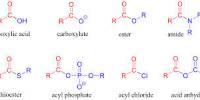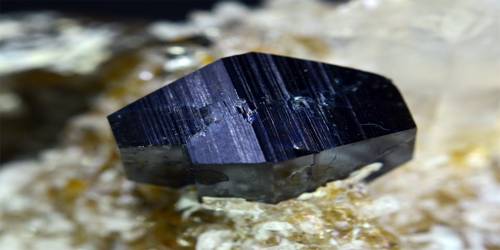In addition to being an excellent substitute for fossil fuels, clean hydrogen energy is essential for achieving carbon neutrality. Researchers from all over the world are working to improve the catalysts used in hydrogen production in order to increase efficiency and reduce costs.
Recently, a research team from City University of Hong Kong (CityU) developed a new, ultra-stable hydrogen evolution reaction (HER) electrocatalyst, which is based on two-dimensional mineral gel nanosheets and does not contain any precious metals. Future efforts to cut the price of hydrogen may benefit from the large-scale production of the catalyst.
A common technique for producing hydrogen is the electrochemical hydrogen evolution reaction (HER). However, commercial HER electrocatalysts are pricey since they are constructed of precious metals.
On the other hand, due to their high activity, increased atomic efficiency, and reduced catalyst usage, single-atom catalysts have a bright future in catalytic HER applications.
However, the traditional method of producing single-atom catalysts is challenging. It usually entails introducing the desired single-atom metal to the substrate precursor followed by a lengthy and energy-intensive heat treatment at a temperature above 700 °C.
In this regard, a research group co-led by CityU materials scientists has created a novel, economical, and energy-efficient method to create a highly effective HER single-atom electrocatalyst using precious-metal-free mineral hydrogel nanosheets as a precursor.
“Compared with other common single-atom substrate precursors, such as porous frameworks and carbon, we found that mineral hydrogels have great advantages for mass production of electrocatalysts due to the easy availability of the raw materials, simple and environmental-friendly synthetic procedure, and mild reaction conditions,” said Professor Lu Jian, Chair Professor in the Department of Mechanical Engineering (MNE) and the Department of Materials Science and Engineering (MSE) at CityU, who led the research.
The unique idea of using mineral gel to synthesize monatomic dispersed heterogeneous catalysts provides an important theoretical basis and direction for the next step of scalable production of cheap and efficient catalysts, which can help contribute to lowering the cost of hydrogen production in the long run.
Professor Lu Jian
Their electrocatalyst precursor is prepared using a simple method. In the first step, room-temperature mixtures of polyoxometalate acid (PMo) and ferric ions (Fe3+) produce brand-new two-dimensional iron-phosphomolybdic-acid nanosheets.
The centrifugation process removes surplus water, transforming the nanosheets into mineral hydrogels devoid of any organic components. Compared to previously reported procedures, which often ask for high temperatures and pressures as well as extended times for the self-assembly of single-atom substrate precursors, the current method is significantly more practical and cost-effective.
After a further phosphating treatment (at 500 ℃) of this mineral gel precursor, a single-iron-atom dispersed heterogeneous nanosheet catalyst (“Fe/SAs@Mo-based-HNSs”) is formed, avoiding the time-consuming fabrication process of loading single atoms on the substrate.
According to the results of the tests, the novel catalyst has exceptional electrocatalytic activity and long-term durability in the HER, showing an overpotential of only 38.5 mV at 10 mA cm-2 and extreme stability without performance degradation over 600 hours at a current density up to 200 mA cm-2.
“This is one of the best performances achieved by non-noble-metal HER electrocatalysts,” said Professor Lu. “The unique idea of using mineral gel to synthesize monatomic dispersed heterogeneous catalysts provides an important theoretical basis and direction for the next step of scalable production of cheap and efficient catalysts, which can help contribute to lowering the cost of hydrogen production in the long run.”
Their findings were published in the scientific journal Nature Communications under the title “Two-dimensional mineral hydrogel-derived single atoms-anchored heterostructures for ultrastable hydrogen evolution.”
The first author of the paper is Dr. Lyu Fucong from CityU. The corresponding authors are Professor Lu, Dr. Li Yangyang, Associate Professor in MSE, and Dr. Sun Ligang, Assistant Professor in the School of Science at the Harbin Institute of Technology.
The research was supported by the Shenzhen-Hong Kong Science and Technology Innovation Cooperation Zone Shenzhen Park Project, the National Key R&D Program of China, the National Natural Science Foundation of China, the Guangdong Basic and Applied Basic Research Foundation, the Science, Technology and Innovation Commission of Shenzhen Municipality, and the Hong Kong Innovation and Technology Commission via the Hong Kong Branch of National Precious Metals Material Engineering Research Center at CityU.
Recently, the group lead by Professor Lu made another advancement in their efforts to address the issue of the high cost of commercial platinum-based electrocatalysts. Through the thoughtful design of a nanostructured alloy, they have offered a remedy for producing an electrocatalyst that is both affordable and effective.
Professor Lu’s team has been carrying in-depth research on alloy nanostructures which have both crystalline and amorphous phases simultaneously. They discovered that the nanocrystalline phase’s local chemical inhomogeneity, short-range order, and severe lattice distortion make it ideal for use in catalysis, but the amorphous phase can provide a large number of active sites with a reduced energy barrier for hydrogen evolution reactions.
As a result, they focused their research on creating dual-phased alloys that would make superior electrocatalysts for hydrogen production. They put out a novel thermodynamically-based alloy and nanostructure design approach.
First, they predicted the composition range of the “crystal-amorphous” dual phase formation according to the amorphous forming ability (GFA). Then, they created the aluminum-based alloy catalyst with a “crystalline-amorphous” dual-phased nanostructure using the simple technique of magnetron co-sputtering.
With an overpotential of only 28.8 mV at 10 mA cm-2, the novel catalyst demonstrated superior electrocatalytic performance in alkaline solution compared to the commercial platinum-based electrocatalyst.
“In this novel aluminium-based alloy catalyst, we use ruthenium, which is cheaper than platinum, as the noble metal component. So it can be less costly than the commercial platinum-based electrocatalysts,” said Professor Lu. “And apart from hydrogen evolution, the nano-dual-phase electrocatalysis mechanism can be applied to other catalytic systems. The ‘crystal-glass’ nanostructure design offers a new approach to develop next-generation catalysts.”
The findings were published in Science Advances, under the title “A crystal glass-nanostructured Al-based electrocatalyst for hydrogen evolution reaction.” Dr. Liu Sida, former postdoctoral fellow (currently a Professor at Shandong University), and Mr. Li Hongkun, MSE PhD student, are the co-first authors.
The corresponding authors are Professor Lu and Dr Li from CityU, and Professor Wu Ge from Xi’an Jiaotong University. Other researchers from CityU include Dr Zhou Binbin, a former postdoc at MNE (currently Research Associate Professor of Shenzhen National Institute of Advanced Electronic Materials Innovation), Mr. Zhong Jing and Miss Li Lanxi, both are MSE PhD students, and Mr. Yan Yang, MNE PhD student.
















